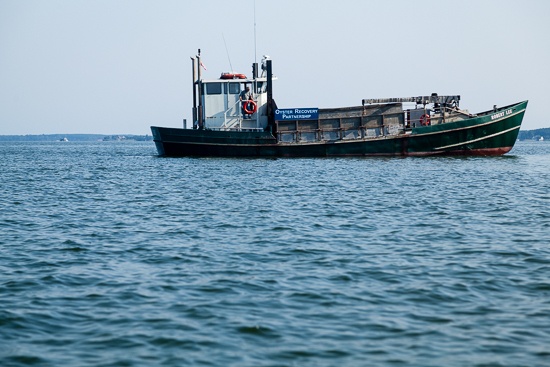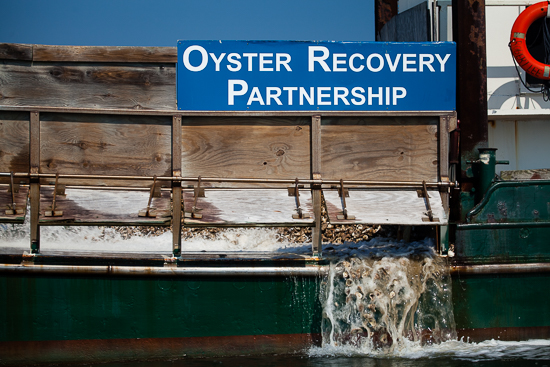Construction complete at Harris Creek oyster reef
Maryland sanctuary now home to more than two billion oysters
Last month, the final load of juvenile oysters was cast into Harris Creek’s 350-acre oyster reef, marking over two billion oysters planted in the sanctuary. One of the largest oyster restoration projects in the world, the reef in Harris Creek—a tributary of Maryland's Choptank River—is the first of ten Chesapeake Bay tributaries needed to fulfill the oyster restoration goals of the Chesapeake Bay Watershed Agreement.

The juvenile oysters, known as spat, all came from the University of Maryland's Horn Point Hatchery. Oyster restoration in Harris Creek has been a collaborative effort between the National Oceanic and Atmospheric Administration (NOAA), the Army Corps of Engineers, Maryland Department of Natural Resources, the Oyster Recovery Partnership, the Nature Conservancy and other groups, such as the National Fish and Wildlife Foundation. Scientists will continue to monitor the health of the Harris Creek oysters as they look toward restoring more tributaries of the Chesapeake.

We first documented Harris Creek in 2012, when roughly a quarter of the construction and seeding at Harris Creek was complete.

Comments
Restoring my faith in humanity, good work!
Thank you!
Your comment has been received. Before it can be published, the comment will be reviewed by our team to ensure it adheres with our rules of engagement.
Back to recent stories